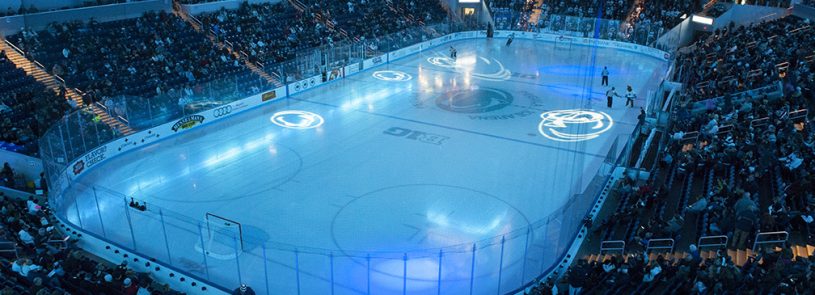Integrating HVAC and ice design leads to the best hockey arenas

By Kyle Wilson
When designing a new ice hockey arena, achieving high quality ice should be one of the primary goals. Even so, most owners don’t take time to consider ice quality during the early planning stages. But when the arena is complete and the first puck drops on opening night, ice quality will be the one thing every skater cares about.
Hockey players want ice that’s fast and hard. Spectators want an arena that is comfortable. The best way to successfully meet both demands is to combine the ice and HVAC design into a simple, best-value approach. Take the LEED Silver Pegula Ice Arena in University Park, Penn., the home of Penn State Hockey, for example. Unlike many rinks which rely on the ice to condition the space, IMEG designed the HVAC systems and ice plant to integrate and be energy efficient. With 26 miles of pipes, high-efficiency screw compressor ice making systems, evaporative condenser towers, and pumps, the sophisticated ice plant is designed for performance, operator safety, redundancy, and ease of maintenance.
Ice hockey arenas are tricky to design, and it’s tempting to pursue an endless list of sustainable and energy efficient features – but that’s not always the best value for owners. A narrow focus on energy cost without regard for other systems can lead to higher overall life cycle costs. Alternatively, a pared-down design with high-efficiency ice making systems, dehumidification units, energy recovery wheels on air handling units, LED lighting, and low-flow plumbing fixtures makes for a more cost-effective and energy efficient arena.
Because the ice surface is where the ice meets the air, having both a high-performance refrigeration system and HVAC system work in tandem is the best way to create great ice. IMEG has put these strategies to the test many times with success due to our engineers’ expertise in both full ice rink and HVAC design. Learn more about the Pegula Ice Arena here.












